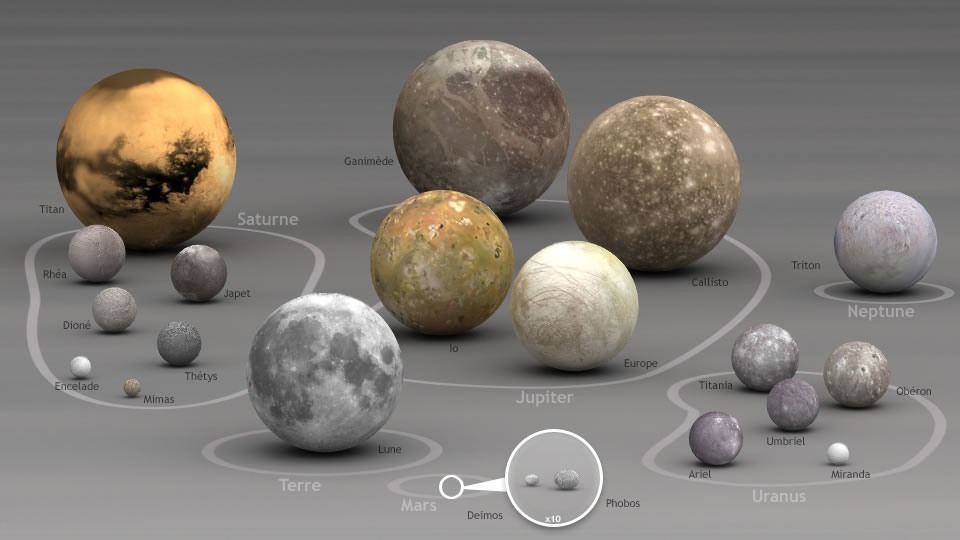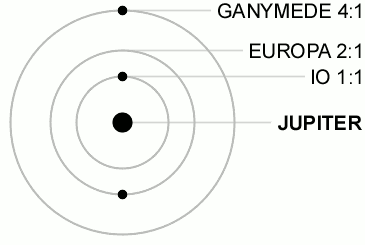Satellites
11.6 - Understand the following principal characteristics of the planets:e) presence of satellites
A satellite is another name for a moon.
All but two planets (Mercury and Venus) in the Solar System have satellites. Occasionally new moons of the outer planets are discovered. You may want to look up the latest numbers for yourself.
Dwarf planets and even asteroids have been found to have satellites.
Astronomers believe there are 3 different ways a satellite evolves:
- A satellite forms in the same area of space as the planet e.g. Jupiter’s Galilean Moons
- A satellite is captured by the Planet e.g. Phobos and Deimos of Mars, Triton of Neptune
- A satellite evolves from the debris from an impact with the planet e.g. Earth's Moon
Planet Satellites
| Planet | Number of satellites |
|---|---|
| Mercury | 0 |
| Venus | 0 |
| Earth | 1 |
| Mars | 2 |
| Jupiter | 79 |
| Saturn | 62 |
| Uranus | 27 |
| Neptune | 14 |
Interesting Moons worth researching
- Phobos & Deimos (Mars)
- Io, Europa (Jupiter)
- Titan, Enceladus (Saturn)
- Triton (Neptune)
Summary
Natural Satellites: Orbit a larger body in space
Man made Satellites: Made by humans
Dwarf Planet Satellites
| Dwarf Planet | Number of satellites |
|---|---|
| Ceres | 0 |
| Pluto | 5 |
| Haumea | 2 |
| Makemake | 1 |
| Eris | 1 |
Interactive
Titan Panorama 360°
Questions - Just for fun
- What differences are there between the origins of the satellites of Mars with the largest moons of Jupiter and Neptune?
- Why are some moons in the Solar System geologically active
Links
- Windows to the Universe Table of moons in the Solar System
- Go Astronomy Planet Moons
- NASA Science Moons




 | © All Rights Reserved |
| © All Rights Reserved |